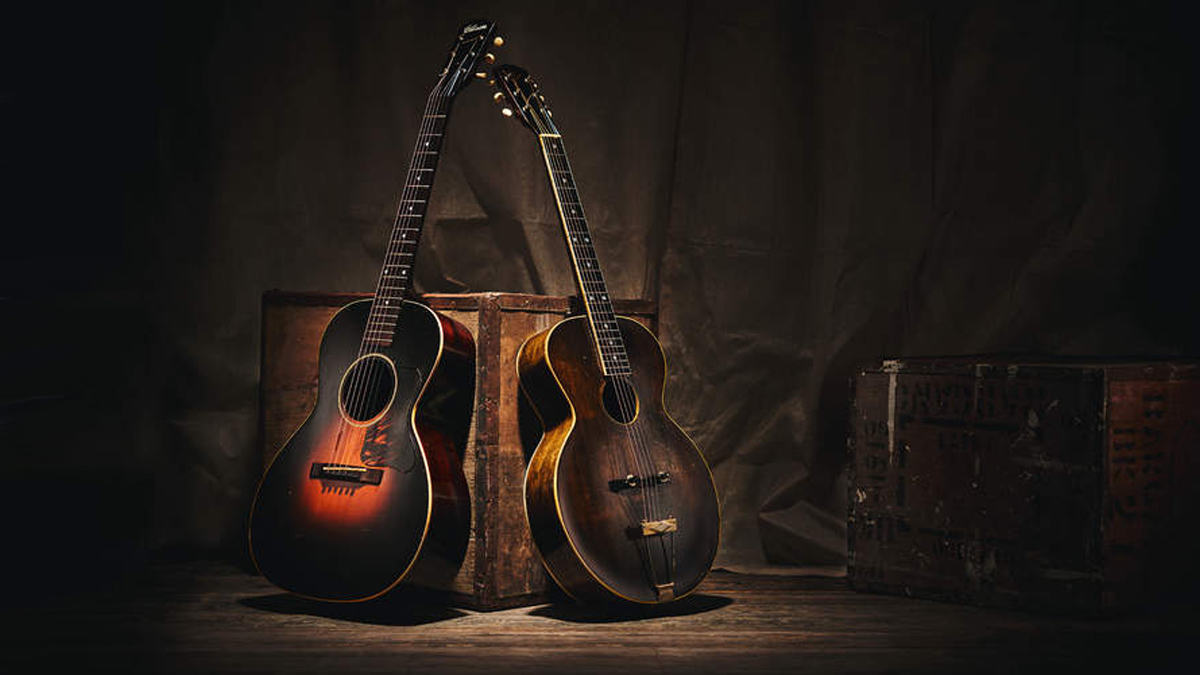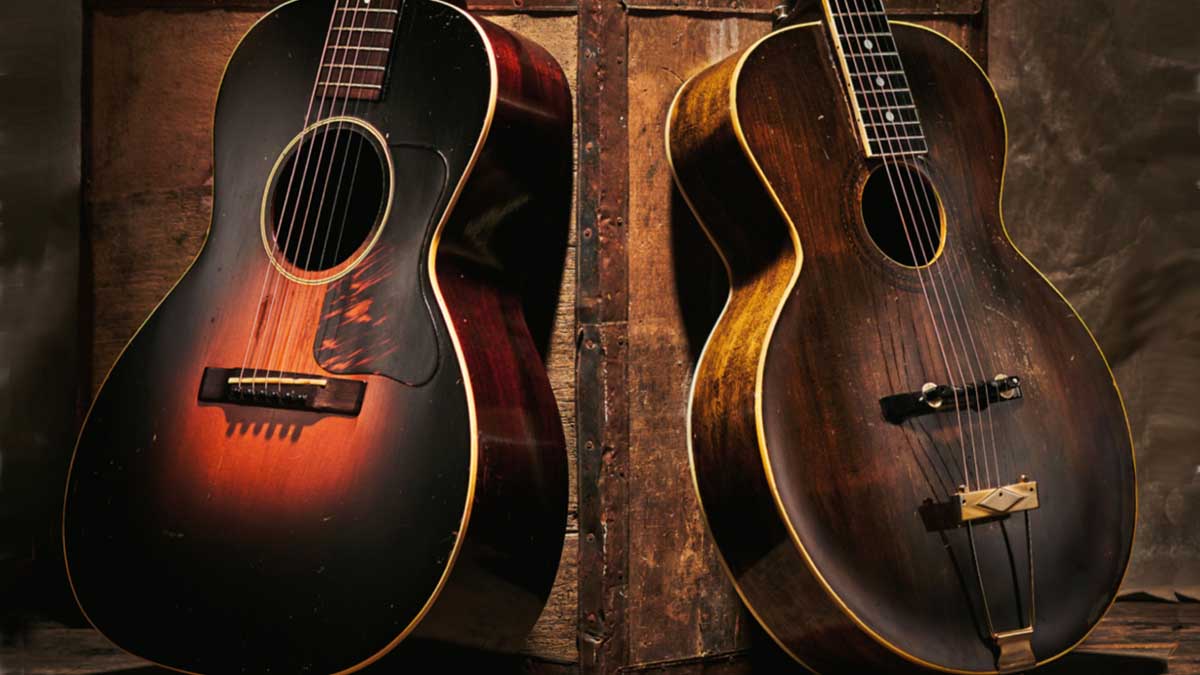The history of Gibson’s L-1 and L-00 acoustics, contemporaries of the legendary Robert Johnson
Acoustic guitars don't get much cooler than mid-1920s Gibson flat-tops

Gibson L-1 and L-00
(Image credit: Future / Neil Godwin)Flat-tops were popular instruments in America throughout the 19th century, with market leaders Martin introducing its first US-made guitar in 1834. However, the first Gibson flat-tops appeared as late as 1926, beginning with the small-bodied L-0 and L-1 models.
Prior to this, Gibson’s L-series guitars comprised archtops – Orville Gibson’s grand contribution to the guitar world – including the 1918 L-1 pictured here. Robert Johnson is perhaps most famously associated with the L-1, having been photographed holding one, albeit the later flat-top version, a markedly different design to its earlier namesake, which was produced from 1902 to 1925.
The L-1 archtop was originally available in standard or concert sizes – 12½ and 13½ inches in width respectively – until 1908, when the smaller size was dropped from production. Inheriting the “concert size” width of 13½ inches, the 1926 flat-top L-1 was introduced with a 12-fret design and this is the more rounded version Robert Johnson was photographed with.
In the late-1920s, the L-1’s body was redesigned with a squarer lower bout measuring 14¾ inches across, and by 1932 14-fret necks were standard. By 1937, the L-1 was discontinued, although Gibson has since reissued the model due to popular demand.

Much like Martin’s 0- and 00-size flat-tops, small-bodied Gibson acoustics have experienced a resurgence in recent years, with Gibson currently offering no less than six variants of the L-00 – namely, the Studio Walnut, Studio Rosewood, Sustainable, Standard, Original and Deluxe models.
Introduced in 1931, the L-00 commonly features a width of 14¾ inches and a 14-fret neck, much like the later L-1 models. Upon its release, it was finished in black, with sunburst becoming standard a few years later (as per the 1934 L-00 pictured, far left), followed by a natural option from 1941.
During the formative blues years of the early 20th century – notably during the Great Depression – many guitarists enjoyed playing less expensive guitars from builders such as Stella and Washburn
Having survived production throughout World War II it was discontinued in 1945. During the formative blues years of the early 20th century – notably during the Great Depression – many guitarists enjoyed playing less expensive guitars from builders such as Stella and Washburn.
Get The Pick Newsletter
All the latest guitar news, interviews, lessons, reviews, deals and more, direct to your inbox!
Back then, Gibson and Martin were, as they are now, premium brands whose instruments were simply unobtainable for many. Nevertheless, both companies made efforts to provide more affordable flat-tops: Martin with its 17-series, and
Gibson as part of its L-series. Skilfully crafted using the same quality materials as higher-end models, these vintage guitars are more revered by players today than ever.
- Guitarist would like to thank Delta blues ace Andrew Bazeley for the loan of these classic Gibsons
With over 30 years’ experience writing for guitar magazines, including at one time occupying the role of editor for Guitarist and Guitar Techniques, David is also the best-selling author of a number of guitar books for Sanctuary Publishing, Music Sales, Mel Bay and Hal Leonard. As a player he has performed with blues sax legend Dick Heckstall-Smith, played rock ’n’ roll in Marty Wilde’s band, duetted with Martin Taylor and taken part in charity gigs backing Gary Moore, Bernie Marsden and Robbie McIntosh, among others. An avid composer of acoustic guitar instrumentals, he has released two acclaimed albums, Nocturnal and Arboretum.
The heaviest acoustic guitar ever made? Two budding builders craft an acoustic entirely from concrete because they “thought the idea was really funny”
“For years, the only 12-string acoustics I got my hands on, the necks always pulled off after a bit. I earned a lot of money replacing them!” Why one of the UK’s most prolific luthiers is a bolt-on acoustic die-hard











